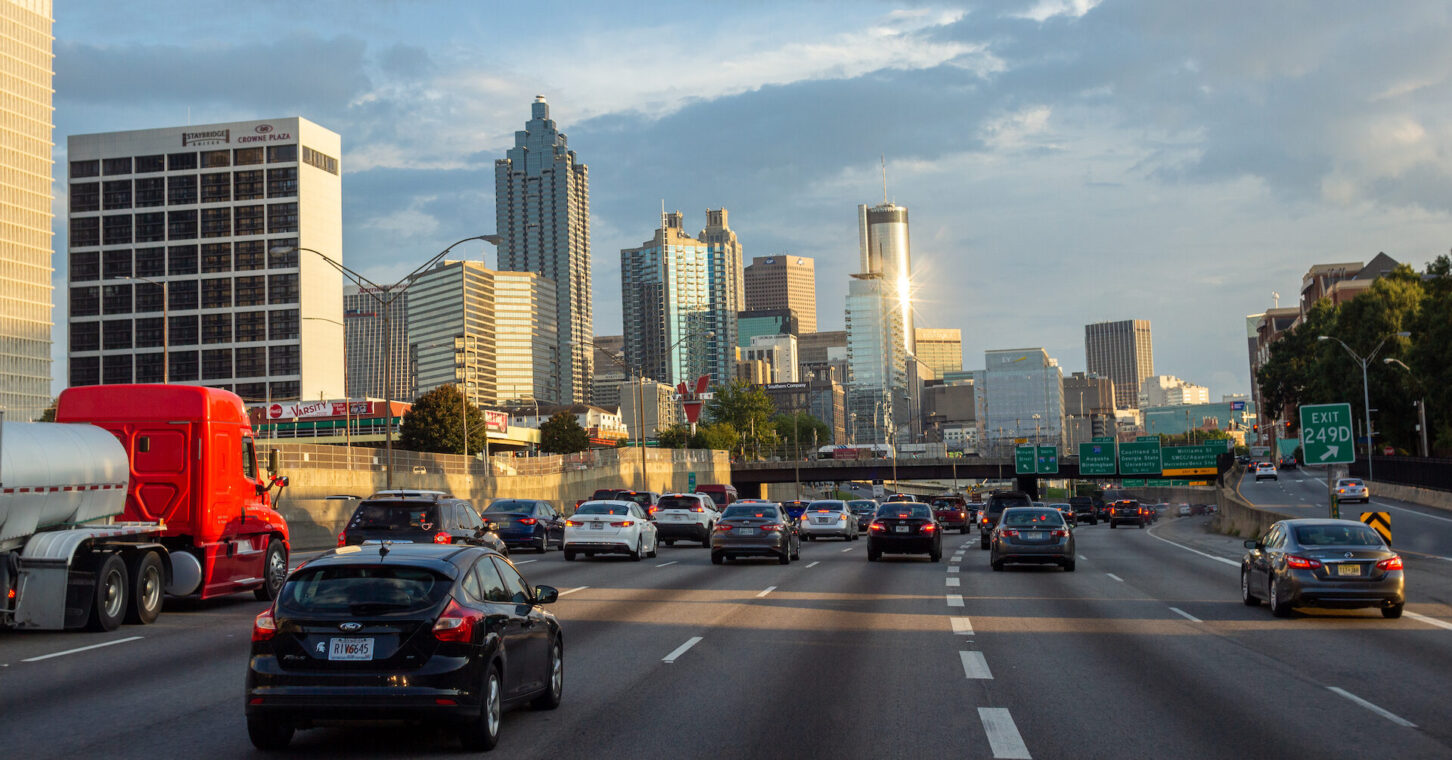
As an international region that is home to about 60 percent of Georgia’s population, Atlanta is notorious for its traffic congestion. Despite the inconvenience, congestion is a sign of a thriving economy. Even so, time spent waiting in traffic is financially and emotionally taxing, negatively affecting quality of life. The state’s transportation policy goals must prioritize improving mobility and relieving congestion. Objective criteria including benefit/cost analysis should be used when weighing transportation options.
Given the Atlanta region’s rapid population growth, simply adding general purpose lane capacity is not the best way to solve congestion. Given the region’s low density, sprawl and multiple job centers, adding rail transit is not the best way to connect people to their jobs either.
High-occupancy vehicle (HOV) lanes are either underused, leading to resentment from motorists in the general-purpose lanes, or overused, leading to similar trip times as the general-purpose lanes. As a result, Georgia has added new priced lanes and converted some HOV lanes to tolled lanes. To the extent possible, users should pay.
As outlined in our Guide to the Issues, here are steps we can take today to ease congestion.
Mileage-based user fees
As electric vehicles become more efficient and popular, they will challenge the state’s reliance on per-gallon fuel taxes. Policymakers must investigate alternatives to fuel taxes for funding Georgia roadways. A transition from per-gallon taxes to per-mile charges will be necessary over the next several decades.
Embrace funding alternatives
Major capital projects should be financed and funded over the lifetime of the infrastructure. Public-private partnerships (P3s) leverage additional financial resources and can transfer risks to the party best able to manage each risk.
Outsourcing paratransit and other demand-response systems such as ride-share services would also save taxpayer dollars.
Expand the metro Atlanta express toll lanes into a seamless network
The Foundation has long advocated for a seamless network of toll lanes around metro Atlanta. Dynamic tolls help pay for these corridors and reduce congestion. Expanding lanes to a comprehensive, seamless network provides motorists with a guaranteed trip route and time. Converting HOV lanes inside the perimeter to tolled lanes would help expand the network.
Improve arterial mobility
Almost 60% of daily vehicle miles traveled are on metro Atlanta freeways. A balanced metro area would have 50% of vehicle travel on Interstates and 50% on arterials. Numerous studies have shown Atlanta to have one of the most deficient arterial highway networks of any major city in the country. Continuing to ignore and underinvest in these vital roadways will limit future economic growth.
Develop alternative freight routes
Georgia must focus on enhancing surface streets and limited-access highways to accommodate freight and divert unnecessary freight truck traffic away from metro Atlanta. This will improve capacity on metro area highways and distribute economic opportunity across the state as truckers relocate and associated industries and services follow. Truck traffic through Atlanta is already significant, and the continued growth of the Savannah port will further increase traffic throughout the state.
Adopt transit solutions that are flexible and adaptable
Instead of arguing for costly taxpayer-funded expansion of antiquated modes such as heavy rail, light rail and streetcars, Georgia policymakers should consider adding affordable, adaptable options such as buses, bus rapid transit, express bus, shuttles, taxis, first-mile/last-mile service and ride-share services.
Further, transit agencies should transition to mobility service managers in which they coordinate public and private mobility options. These managers would prevent duplication of services, enter into contracts with private transit operators, and ensure the most efficient transit option is provided.
Develop first- and last-mile solutions for transit
A bus stop’s service area is typically defined as a quarter-mile radius around a stop, roughly equivalent to a five-minute walk. For rapid transit, the distance from a stop increases: up to a mile.
Park-and-ride lots at transit stations, “kiss-and-ride” drop-off points and corporate and college shuttles to and from stations are among first-mile and last-mile solutions. Taxi parking, ridesharing and scooter and bicycle rentals are other options already in practice in parts of Atlanta.
Plan for a future of transportation innovations
As technology evolves, so do transportation choices. Instead of handicapping alternatives to driving with taxes, fees and regulations to protect politically favored monopolies, legislators and policymakers should loosen the reins and examine how to facilitate consumers’ private-sector choices.
